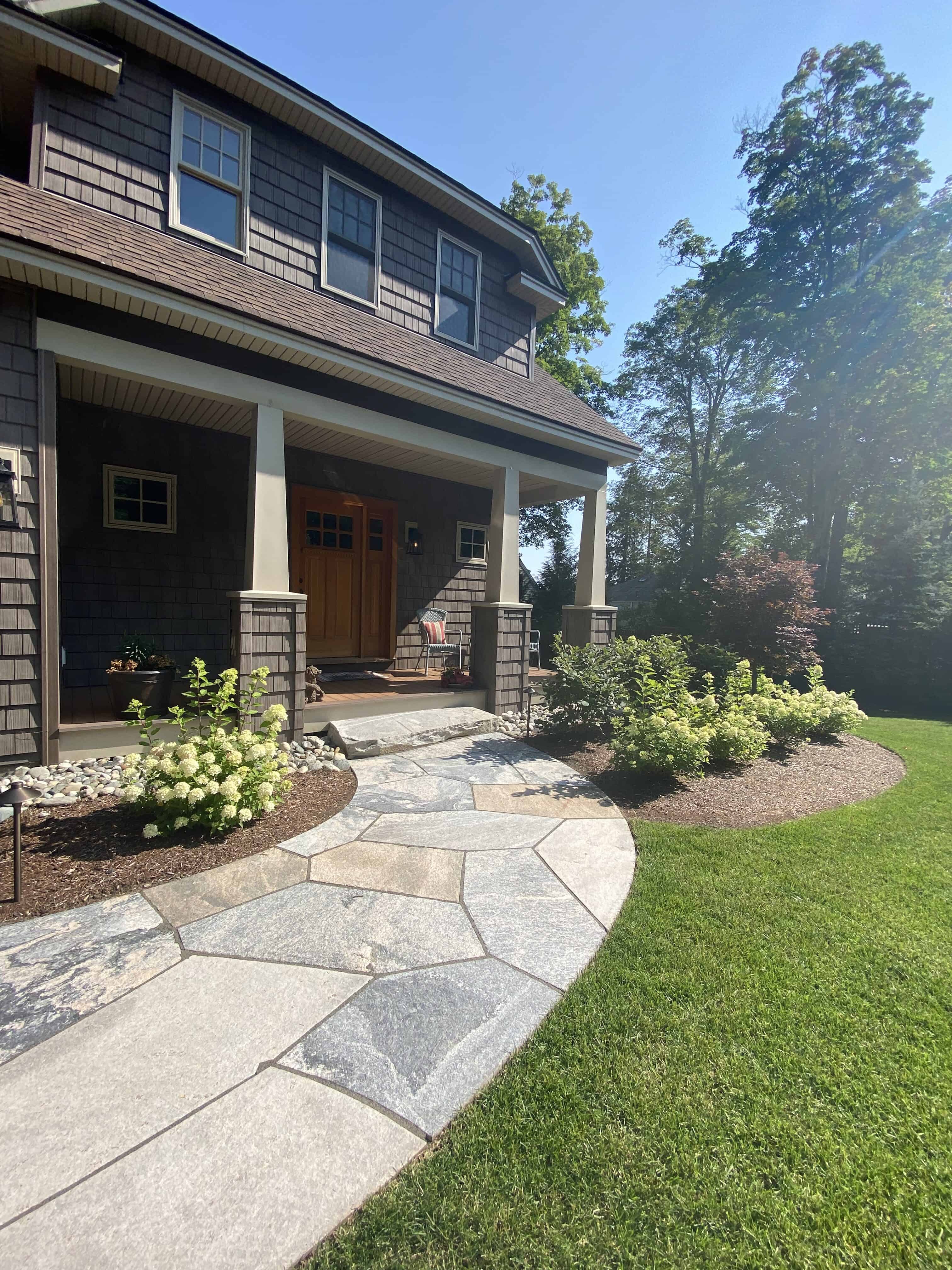In this month’s blog, we’ll discuss how to deal with the water conditions of your property: having not enough and having too much.
Dealing with Drought
If it hasn’t rained for a while, look for signs that your landscaping is experiencing water stress—plants with stunted growth or brown or yellow leaves, trees dropping leaves and have some dead branches, plants in the garden may not have flowers or start to seed early, and your lawn may start to show footprints or can’t “bounce back” after you walk on it or may even begin to show brown spots in some areas.
If a drought is coming, there are steps you can take immediately to minimize the damage:
- Add mulch to garden areas and bare spots. Mulch keeps areas cool and traps moisture.
- Don’t add any new plants; instead, focus your watering efforts to your existing landscape.
- Don’t fertilize your plants or lawn. If you must fertilize, cut the amount of fertilization by half. Your lawn and plants are trying to survive, not grow. Fertilization is not needed at this time.
- Pruning is not necessary, but remove dead branches and leaves, stalks, etc.
- If plants look like they are going to die, remove them. Try not to waste water on something that will not make it through the drought.
- Pull weeds. Eliminating weeds will cut down on unnecessary water usage, and your landscaping will look better.
When mowing your lawn, don’t mow too short. Keeping the blades long will shade the soil, reduce evaporation, and minimize any heat damage that may happen during the drought. Consider leaving the clippings on the lawn to help protect it and return nutrients to the soil.
If the drought is really bad and it looks like it will continue, consider letting your lawn go dormant; most grass is drought resistant and will recover when a steady supply of rain returns.
If you have ornamental plants around your yard, consider how long is left in the season. If it’s an annual, is it worth keeping them alive? If the season is almost over, it might be easier to let them die. If you’ve planted shrubs and trees in the past one or two years, they are more susceptible to being lost. Focus your watering efforts on new plantings, those plantings that are expensive to replace, or anything that you’ve planted that has sentimental value.

How to Water During a Drought
Once a drought is firmly established, soil will begin to harden and get impacted. Add water slowly so it gets absorbed instead of running off. A good way to make sure water gets absorbed well is to use soaker hoses. After running for an hour check that water has penetrated down about an inch; if not, run the water longer.
It’s best to water on a schedule, and to water in the early morning. This will stop the water from evaporating and allow time to soak in the soil. Do not water at night; wet grass overnight can cause fungus to grow.
If you have an irrigation system, it’s best to use a timer. Some irrigation systems can connect to your home’s Wi-Fi to monitor weather conditions. These systems control when and how you water your property and respond to water, weather, and soil conditions to deliver the right amount of water at the right time.
Water, Water Everywhere
What if we’re having a rainy summer and we’re experiencing the opposite problem? If you have noted areas of your lawn or garden where water pools, there are things you can do to avoid erosion and have your plants or lawn die from too much water.
One thing you can do is aerate your lawn to assure water is penetrating the dirt’s surface. By doing so, you’ll direct water to the roots of your grass, which will make it stronger and more lush when the rain stops. And it’ll make the soil less compact, allowing it to drain easier.
Make sure your gutters and downspouts are clean, so the runoff doesn’t create erosion around the foundation of your home, garage, or other outdoor structures and buildings.
When planning your landscaping, be sure to properly grade your lawn, garden, and flower beds. And choose plants that love water—ask us if you’re unsure.
For existing landscapes, add soil and grade the surface away from your home. Consider adding terraces to your landscape to help water run down slopes. Prune your landscaping to allow sunlight to dry areas.
For areas that always seem wet or are susceptible to pooling, you might have to install a drain, or consider changing the layout to a hardscape. You can add a permanent water feature and incorporate that area, like a pond, water garden or even a meandering stream with a bridge to your yard.
At Stephens Landscaping, we have a lot of experience helping homeowners come up with a plan for drought and overwatering. Let us help you and your landscape; call us at 603.707.0630 or contact us today.

